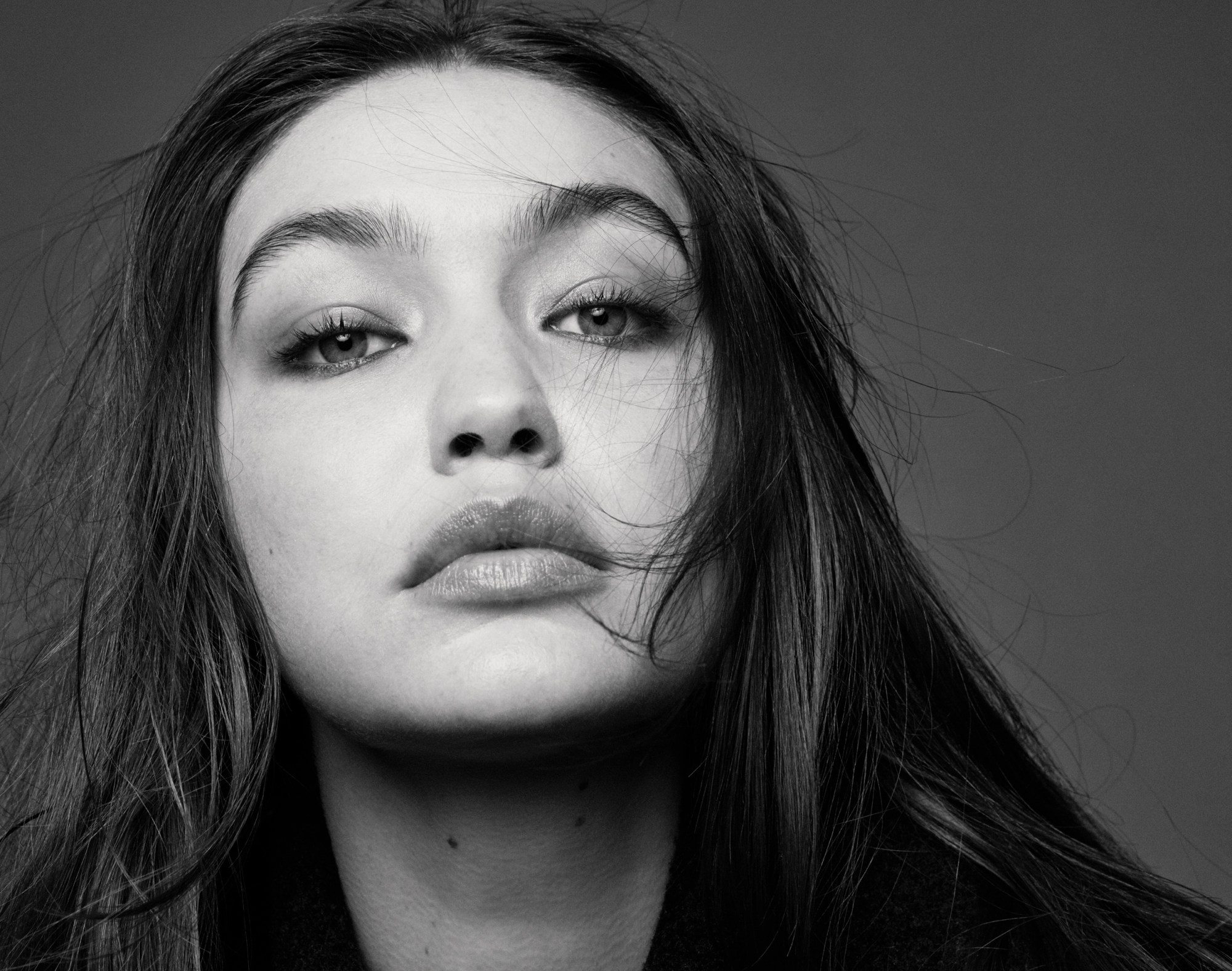Mary-Kate and Ashley’s story originally appeared in i-D’s The New Worldwi-De Issue, no. 363, Summer 2021. Order your copy here.
It started with a simple white T-shirt. In 2006, at the height of Hollywood’s trashiest and fashion’s blingiest logimania phases, a label sprung up in New York with a soft, slouchy silken tee that took a year and a half to perfect. With a single French seam running down the back, it was carefully designed to prevent awkward bunching and rippling. Just as a spade is a spade to some, a T-shirt is just a T-shirt. For others, the simpler the garment, the more noticeable its flaws. It’s an existential meditation on discipline, rigour and the eternal quest for perfection. But back then, shoppers at Barneys would be hard pressed to find the names of the shirt’s designers. The label? Technically, there wasn’t one. In lieu of a monogrammed tab on the inside back of the tee hung a delicate gold chain. No name. No label. No explanation required.
15 years later, we can consider that T-shirt Mary-Kate and Ashley Olsen’s carte blanche. The sisters, who by then needed no introduction as childhood stars turned tween idols, started The Row at just 18 years old. And just as Ralph Lauren started out with ‘the perfect tie’ and dubbed his Bronx-born label Polo, after the quintessentially British sport, the sisters named The Row after Savile Row in London, the home of the world’s best bespoke tailoring firms.
“I don’t know how conscious we were of what we were doing at that time, to be really honest,” says Ashley (dirty-blonde, alabaster, minimal silk shirt, mirrored necklace). “We had just moved to New York. We were 18 years old and I think what we did know was that we wanted to take that time to take a break from what we were previously doing and to explore things that interested us, and explore what life has to offer…” “Creatively,” Mary-Kate chimes in (honey-toned hair, bronzed skin, paisley shawl). “We wanted to explore making something of ourselves,” Ashley finishes.
Prior to arriving in New York, they had indeed made a megabrand of themselves in Hollywood, first appearing on TV screens at just nine months old and eventually blossom-ing into designers of a colossal mass market clothing line before they were even teenagers. Their names had probably been associated with the production of countless T-shirts over the years. Yet The Row couldn’t be further from that. Like all adolescent rebellions, it was prophetic of their own evolving image, except from the start, it was mature beyond its years and considerately made by the best ateliers. It was the kind of understated, purist clothes that instantly attracted discerning women, many of whom had no idea that the sisters were behind it. “We didn’t want to be in front of it, we didn’t necessarily even want to let people know it was us,” Ashley explains. “It was really about the product, to the point where we were like: Who could we get to front this so that we don’t have to?” It heralded the beginning of their adult lives. Mary Kate and Ashley are now in their mid-30s and celebrating a mile-stone anniversary: a decade and a half of business. Not bad for two women the fashion industry was reluctant to embrace at first, ready to write off as yet another celebrity line.

It’s been a slow 15 years, even if the growth has been exponential. Unsurprisingly, there will be no glitzy celebrations, retrospective shows, or viral videos. That’s not their style. Today, Mary-Kate and Ashley are two of fashion’s last remaining sphinx-like progenitors of IRL, see-it-to-believe-it BCBG. They rarely give interviews (“We’re a bit out of practice,” warns Mary-Kate), they don’t have social media, nor do they shop online. At a time when almost every fashion house has adopted the see-now-buy-now temperament of fast fashion and opened the floodgates, they have spent their adult lives doing the opposite.
Instead, they are the kind of detail-obsessive designers for whom enormous emphasis is measured in the merest millimetres. Their stores in Los Angeles, London and New York are polylithic temples of Zen, homes to priceless pieces of art and legendary 20th-century furniture, as well as sculptural rails of saintly, double-faced, 16-gauge cashmere and menswear-inspired overcoats. There are also mercantile assortments of Florentine soaps, Parisian fragrances, archival Japanese fashion and Maharani-worthy jewels.
“I think we’re very much perfectionists and hard workers and we’ve always been hard workers,” Mary-Kate says. “So, I am happy that people look at it as a perfect product, or products that feel complete, or whole. I think the reason that we do fashion is to constantly try to fix our imperfections, and you always have next season to do that. It’s also our job to find every imperfection in there to make sure that we’re constantly pushing ourselves and training our eyes and making sure everyone is served. Just evolving and learning.”
In terms of the clothes, simplicity is implicit but not explicit. Basics are anything but, couture-like in principle but casual in ease. Slippers come in meshed cashmere and flip-flops in Tuscan leather; bag handles are formed of knot-ted velvet or nappa scrunchies. It’s luxurious in a deliciously puritanical, American way – in the way that Dutch Old Masters are both sumptuously lavish yet incredibly sombre; American in the way that Georgia O’Keefe is, even if she seems apart from it.

Often, the clothes are plain and enveloping, but what may appear minimal or even monastic actually feels wildly indulgent. “The word luxury is used pretty much everywhere now, but for us it’s something that makes your life easier,” Mary-Kate points out. “The idea that you could buy something off the rack, put it on your body and it already feels like a part of your wardrobe, that’s luxury. You don’t even have to think about it.”
And, yes, the prices are eye-watering. Not because of superficial branding or celebrity endorsements, but because it’s all made by hand in the world’s best ateliers by fairly paid and highly skilled seamstresses. In fashion parlance, it is costly but not expensive.
Instead of trends, the collection is imbued with the warmth of voluptuously curved Modernist sculptures. Think Isamu Noguchi, Beverly Pepper, Jean Prouvé – all artists they’ve brought into their orbit. At their early morning shows in New York, which often dispense with seating and offer cups of cleansing green tea, a cast of bare-faced, ageless models navigate their way round Beverly Pepper sculptures. Going to their stores, too, feels like visiting a gallery. “I guess it’s important, but not because it’s important,” Ashley says. “It’s just that we love it and we want to share things that we discover with our customers.”
Their backgrounds were unexpected training grounds for a career in fashion. Not that they would ever talk about that time in too much detail. They are, as Mary-Kate puts it, “discreet people – that’s how we were raised”. They’re as tight-lipped on their private lives as they are on their upbringing, which is why throughout this piece, you’ll notice that there is little on their lives before The Row.
It doesn’t take a psychologist to surmise that an entire childhood in the public eye has resulted in an adult-hood defined by its regimental boundaries. Today, they’re still hounded by paparazzi, their outfits chronicled by fan pages and blogs, their twindom greatly exaggerated. Yet, the way they present themselves demands privacy, and so do their designs.
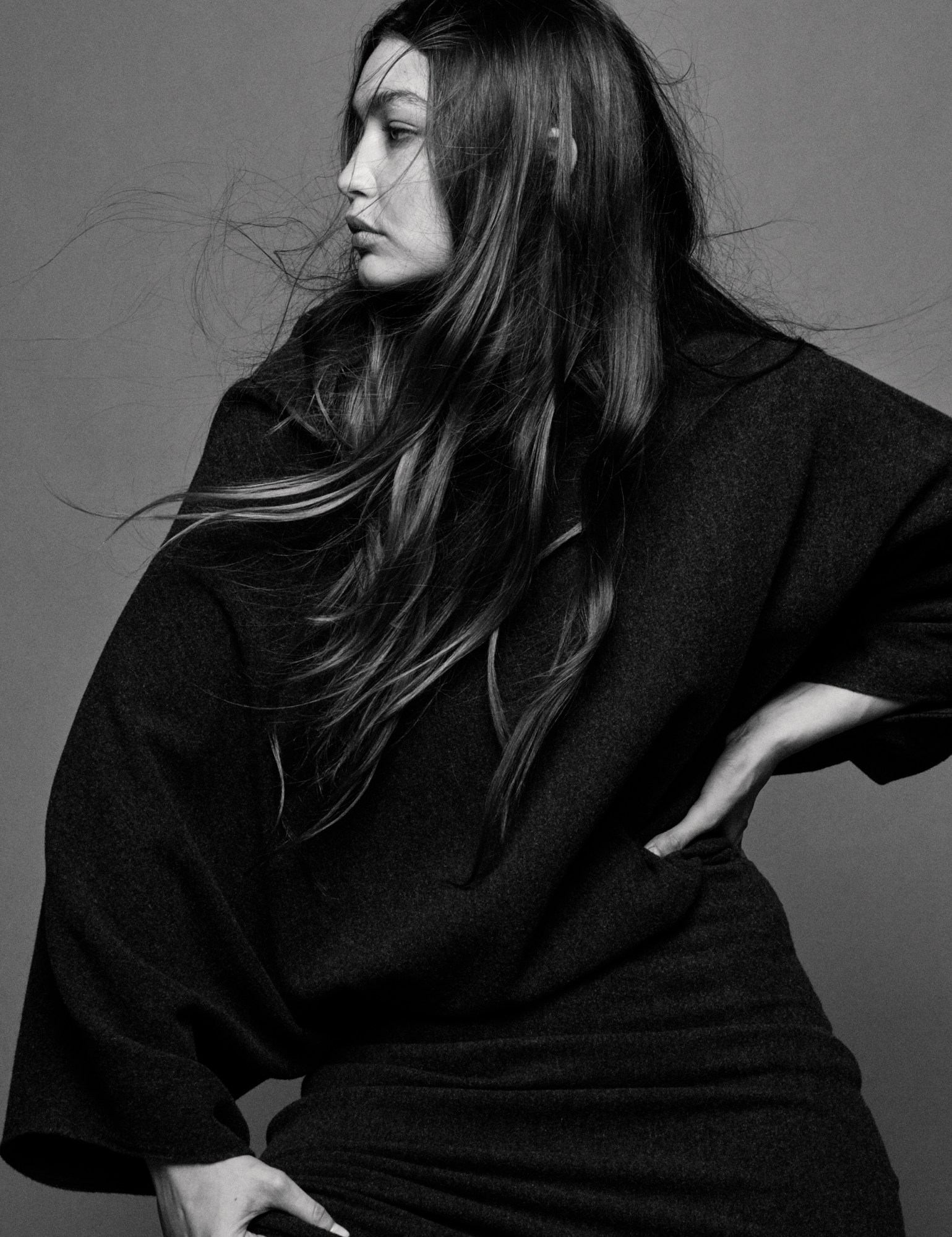
The Row is protective, discreet, modest, which is why some of the world’s most hyper-exposed, endlessly photo-graphed young women – Bella, Gigi, Kendall, Hailey et al – have all started wearing it. “I guess they’re aware of it, but whether or not they are, it seems like that’s what they’ve designed for,” Gigi Hadid says. “It’s very liberating when you are one of the most photographed people, including them, to be like, ‘This can make me look chic and feel protected.’ It makes me not have to deal with questioning. They’ve really been inspirational for me in terms of not going with what’s expected, with the quick dollar or something that’s easy. I love that if you walked into the store, you wouldn’t necessarily know that Mary-Kate and Ashley were involved, but you’d know that [the clothes are] of the highest of quality and designed beautifully.”
In 2006, Mary-Kate and Ashley started The Row while studying at New York University. Beginning with the ‘perfect’ white T-shirt, the line soon came to comprise seven perfect pieces: sateen leggings, a tank top, a cash-mere dress, a blazer, a cardigan, a sleeveless sweater.
Ashley Olsen: I think in the beginning it was really a project for us. So yes, it started with the T-shirt and then six other pieces fell out of that: tank tops, cardigans, leggings… But it was really about perfecting the fit and perfecting the fabric and it really was kind of just a passion project. It took a year and a half, because there really was no end date or goal in mind as far as turning it into a business, I’d say.
Mary-Kate Olsen: It had to be easy. It had to be comfortable on all bodies. It really had to have all the elements that we continue to put into our projects and design. The fabrics had to be luxurious and perfect and, hopefully, have longevity. The items were really about perfecting and simplifying the details.
Pamela Golbin: I think I read about their seven pieces and I was really intrigued because in 2006, we were in the middle of ‘logomania’. I think it’s important to put it into context. Every-thing was about conspicuous consumption then. So here is a duo, sisters, who were starting something that has nothing to do with branding. It’s about ‘stealth wealth’ and a certain kind of minimalism.
Ashley Olsen: It was small enough for the business to get through the early years, and I think we even saw more of an investment in our pieces because it was really about the quality of the garment and people felt comfortable and safe investing in our pieces.
Sarah Andelman: I visited the showroom in Paris very early on, and I was trying to see what would be the best way to make it work with the rest of our selection at Colette. It was becoming important for us to carry timeless brands.
James Gilchrist: I remember being surprised from the very beginning. These two very famous girls had managed to make something that wasn’t a typical celebrity brand.
Below, listen to a playlist curated by musician Wladimir Shall, The Row’s sound designer.
Pamela Golbin: This was the moment of Paris Hilton and Nicole Richie, and yet they were doing exactly the opposite.
Jonah Hill: I think because they came from being kid stars – which I wouldn’t usually associate with great style – when they started dressing with incredible taste it was a bigger mind-blow for people because it shattered the image that people had of them in their minds.
Mary-Kate Olsen: At the beginning Ashley and I had been working in the fashion mass market so we had a pretty good idea of what sells, what doesn’t. But Ashley and I, we have an appreciation, and always have for fashion and certain brands. Even at the very beginning, I remember being like, just in case someone asks: We’re good with the gold chain for a logo. We thought that if these are quality items; if they do fit well; if this is true luxury – will it sell without a logo? Can it sit in a store with no name and will it sell? Will people want to buy it if the products are right?
Ashley Olsen: We really didn’t want to be in front of it. We didn’t necessarily even want to let people know it was us, in a way. I mean, it was one of those things where it was really about the product, to the point where we’re like, ‘Who could we get to kind of front this so we don’t have to?’ I think, to this day, you’ll see we really put the product first.
Ruth Rogers: I didn’t even know it was them. I think I was less involved with their personality, and more with the beauty of the clothes. I think I have almost every sweater they’ve ever made and they’ve seen me through everything… I put on one of their sweaters and it makes me just feel like all’s right in the world. I grew up wearing Jil Sander and Phoebe Philo is one of my closest friends. People often ask me in the restaurant, what’s the new trend or what are people cooking now and what’s going to be the next thing in food and what’s new just doesn’t interest me at all. What interests me is the kind of progression of the work that people do.
Ashley Olsen: I’m sure, if we looked at the collections from the beginning and if we were to review them, I think there’s a story there within itself. It probably would show how we were evolving or where we were at [each] point in our lives.
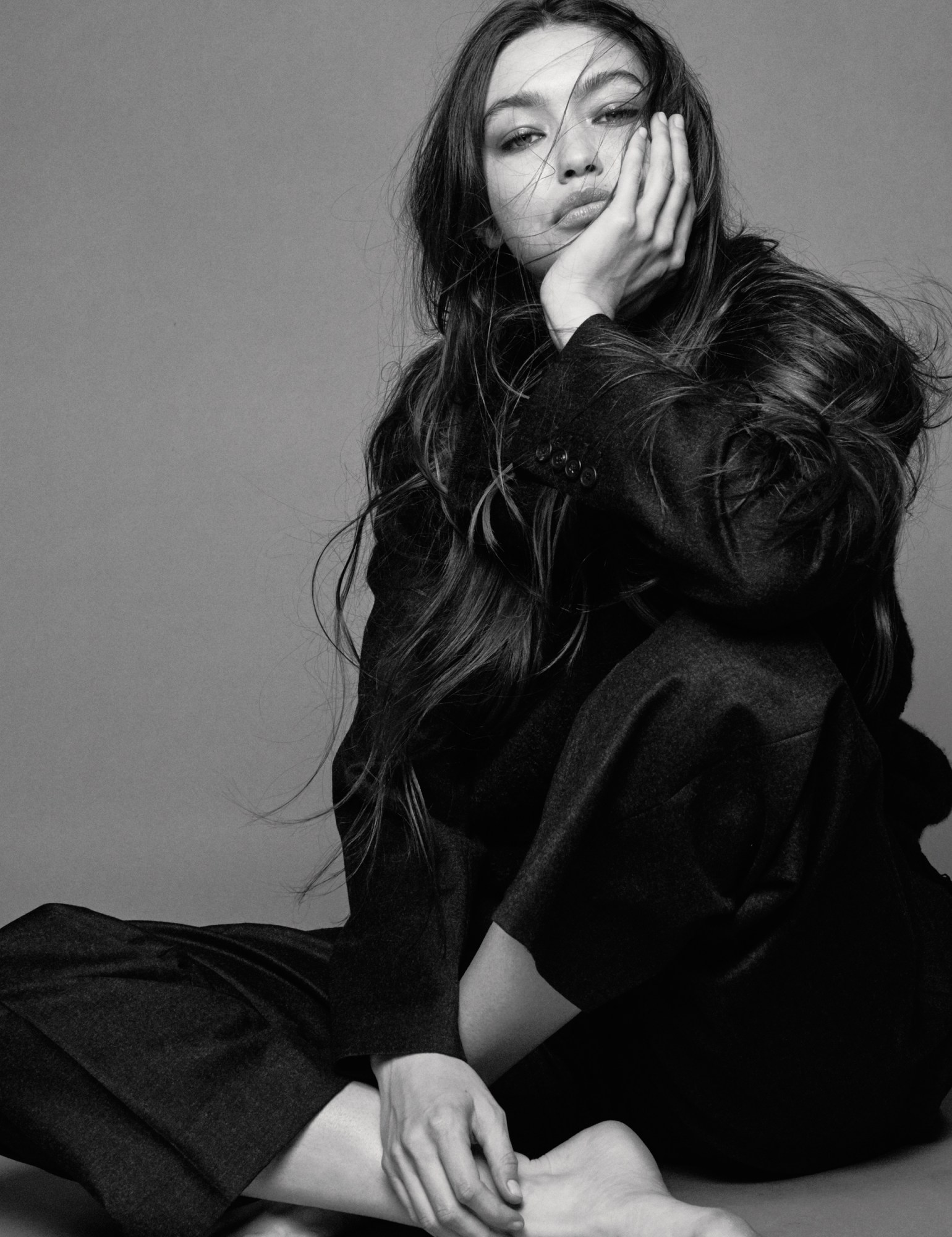
In 2010, The Row held its first show at New York Fashion Week. The next season they cancelled their show at the last minute due to late-arriving samples, instead choosing to hold an intimate salon presentation in Paris. It heralded the beginning of unconventional presentations for the brand, often intimate and agelessly cast and, more recently, based around sculptures by legendary artists in their own West Village showroom.
Ashley Olsen: I guess the first show we did really was in more of a traditional show format and I remember walking away being like, ‘I can’t do this again!’ I think that is why we really started to explore presenting in a more intimate environment. It’s more work for us – we have to do three shows instead of one – and it’s definitely a lot more effort, but it’s really about eliminating the noise in the room.
Mary-Kate Olsen: It’s hard to talk about a show because you remember all the negatives. I would say over the past few collections the shows have felt more streamlined. Not that it’s an easy process but it’s a bit easier now.
Wladimir Schall: They are researching music all year long. They follow what they think is right for the show, [rather] than trying to be something else. It’s a very interesting process. A lot of people are afraid of a radical sound. But they’re even thinking about the way it will be played. Before one show, they went to a speaker factory to design a speaker tailored to the sound in their show space. Once, they were like, ‘Oh, we were listening to The Smiths’, and I said, you know what? Let’s just buy a vinyl record of The Smiths and play the whole album, with the silences in between the songs. And it made sense because it was just so natural.
Gigi Hadid: When I think about being in their shows it’s something that’s very calm, quiet, not over-exposed. They don’t have a thousand photographers backstage. There’s not even that many photographers on the runway. That comes from them. They want to put out their art without feeling too exposed or too vulnerable or used for the wrong reasons. They don’t want people showing up like ‘I’m here for the Mary-Kate and Ashley show.’ They want people to come and respect the clothing.
Wladimir Schall: With time, the brand has gained confidence and trust in what they really wanted to do, even if it was kind of against the rules – like doing a show in a castle outside of Paris or even a show for 60 people in their show-room. They made it what a show should really be, rather than just something pleasing to journalists or buyers.
Mary-Kate Olsen: You roll with the punches. You have to be flexible. It’s helpful and important to work with a team you don’t have to micromanage. You know what to expect from them. They know how to work with you. Everything is aligned. Because putting on a presentation is a lot of work. It’s hard, it’s emotional, it’s time consuming, but when it’s finished and it’s great, you have that moment – it’s maybe 30 seconds or a minute long – but you remember that moment.
Carolyn Murphy: Their shows are refreshingly stripped of overtness. Their references might spawn from a person, nature or an object of art but there are always well-thought-out layers. The last show I did with them, you had a female sculptor, Beverly Pepper, who had been the muse and centrepiece of their collection, and sadly she passed days before the show. The song choice of Elvis was like a soothing balm and an unexpected homage, and the last few seconds of the show were without music and only our footsteps.
Wladimir Schall: There’s always this notion of contrast, these juxtapositions of states. In the music, we’ll use very raw tracks, not super high-quality. It could be Richie Havens on the guitar in a basement in 1967. It’s minimal and poetic and it’s the only show where I cry every time.
Yasmin Warsame: I was walking in one of the shows and I didn’t know it then, but I was pregnant, and I remember not feeling any restriction in the clothes. It was this beautiful long skirt and an oversized shirt. I could tell something was going on with my body, but their clothes didn’t make me feel any different. I felt beautiful in them. I remember we were all in a line-up before we went out on stage and all the girls were just admiring every single piece. There are other shows where I’m like, ‘Get it off me!’ [Laughs] With The Row, you always just want to spend a little more time in them.
Zoë Ghertner: Not all women want to be seen in the way that the world thinks that they do. They’ve felt an extreme version of that, and perhaps that’s why so many women relate to what they do – but it doesn’t feel like armour, or a barrier to the outside world.
Gigi Hadid: That’s why I feel very understood by them, and so I walk their shows with comfort and gratitude because they see me for myself. Not that other designers don’t, but other designers see me for myself in terms of a quality of my life that more commercialised, big, money-making shows can take advantage of. When I walk for Mary-Kate and Ashley, I don’t feel taken advantage of.
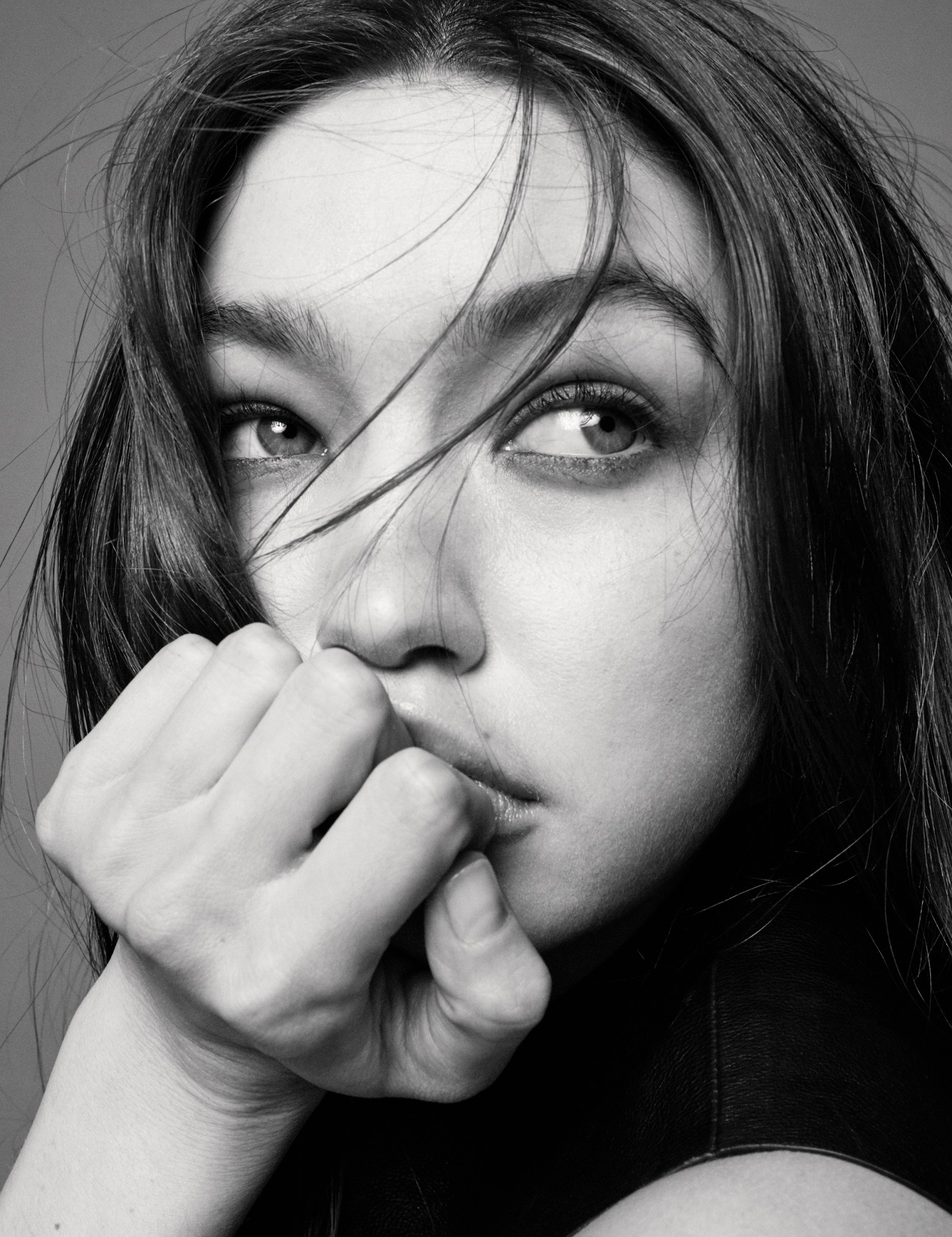
The Row has become known for its discreet, modest style of clothing. Hemlines often skim the floor, armholes are dropped for a more generous fit, and the clothes presented layered on top of each other. As a result, a diverse array of women – different sizes, nationalities, ages and tastes – have become devoted customers.
Alastair McKimm: Undoubtedly, the world’s most famous, most exposed, most discreet and most style-obsessed women have an affinity with The Row because of the women behind it.
Gigi Hadid: I guess they are aware of [being photographed], but whether or not they are, it seems like that’s what they’ve designed for. It’s very liberating when you are one of the most photographed people, including them, to be like this can make me look chic and feel protected.
Mary-Kate Olsen: We were raised to be discreet people.
Ashley Olsen: I think that potentially that’s just our aesthetic, our design preference. But that doesn’t mean that we don’t also appreciate something truly ornate or maximal. Sometimes a collection even starts quite like that, and then gets pared down. It doesn’t always start from that simplistic place.
Jonah Hill: I think both women move with extreme taste without ever being gaudy. I like that they don’t chase trends. They essentially do what they do and do it better than anyone else without chasing a fad. I think you will be safe in 20 years in any photograph where you’re wearing The Row. There won’t be a, ‘What the hell was I thinking?’ moment.
Zoë Kravitz: About four years ago, my friend Karina was wearing one of their bags: the cutest little velvet pouch bag I had ever seen. I immediately bought one and then I was hooked.
Ruth Rogers: I think they’re very sexy clothes, but there’s a subtlety and elegance to it. I want clothes to be fun. I don’t wear black. I love fabric and I love the quality of the cashmere and I like the colour of the sweaters.
Mary-Kate Olsen: The word luxury is used pretty much everywhere now, but for us it’s something that makes your life easier. The idea that you could buy something off the rack, put it on your body and it already feels like a part of your wardrobe – that’s luxury. It’s when you don’t even have to think about it. I think if fabrics are used correctly, they really speak for themselves. And I think you have to know when to highlight the fabric and let it just speak for itself and not control it, or try to over-design it, and know when not to cut it. I think fabrics dictate a lot of design. The process has to start with fabrics because of the way the scheduling works. So, half of your ideas might come from that.
Pamela Golbin: It’s always about the person who’s going to wear the clothes and not vice versa. It’s almost like they are chameleonic pieces – they change depending on the personality of the person who’s wearing it.
Mary-Kate Olsen: We’re quite petite people, and we do collect couture. We have a love for design and there weren’t any pieces we could really wear because the product would wear you. That was another thought as we started The Row. Every season you become a little smarter. You learn something new. You push yourself. You push your teams to explore, to dig deeper or wider. Now we also have multiple categories so that also, you know, it’s a totally different way of thinking and evolving. I think we’ll always evolve with our clients and with the brand because we’re constantly learning and the world is constantly changing. We’re not chasing anything, we’re just being really honest with who we are and where we are with the brand.
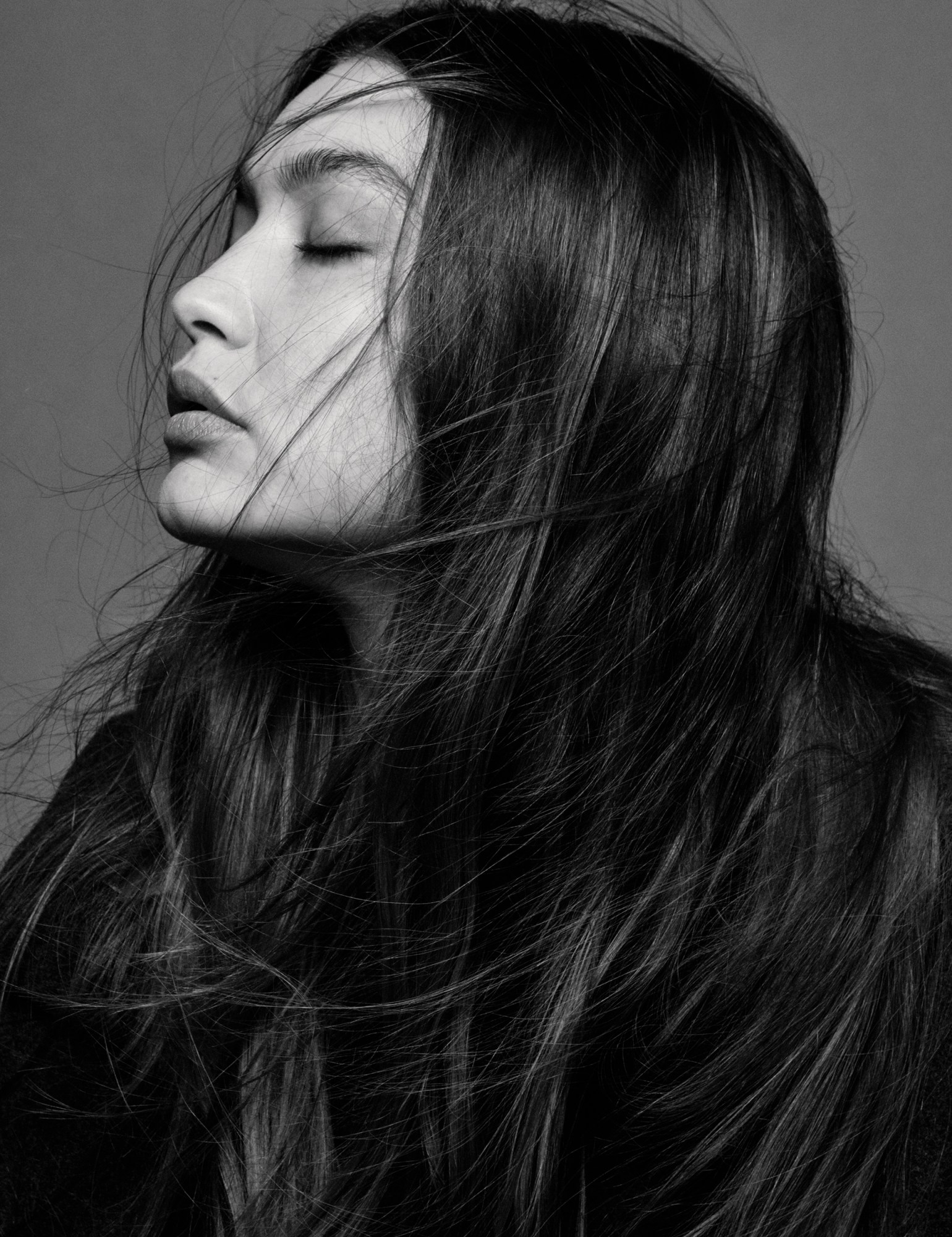
Perhaps the world’s fascination with Mary-Kate and Ashley is due to the fact that they are twins. Much has been made of Mary-Kate’s whimsical yin to Ashley’s entrepreneurial yang. But they were both businesswomen in pre-school, billion-dollar brands by middle school. Duality comes naturally to them, perhaps because they are twins but also because they have navigated the balance between commercial and creative for decades.
Ashley Olsen: We like working together and we like having that dialogue. I think it helps harden your ideas to be able to hear them out loud, to speak something through. You know, we definitely go by intuition and instinct and it can either confirm that feeling, or if we’re both not feeling right about something, for some reason, we just don’t do it. Our instincts are kind of the same. But I think what’s great is that we have each other to lean on. And managing design is one thing and then also running the business side is another and I think you have a lot of decisions to make. I mean, when you put those two things together, there’s a lot of decisions to make on a daily basis, so I think we feel fortunate that we can have that dialogue and divide and conquer a bit.
Alastair McKimm: I think people would be surprised by how intimate their team is, how hands-on and detail-oriented they are, poring over every decision from hem lengths to paper stocks.
Gigi Hadid: When you go into their office and you see their desks you can tell that they work there. They’re there every day, and their desks are within and amongst the people that work with them at the office. I really respect that.
Yasmin Warsame: I think everybody probably was a little taken aback by the fact that they really knew what they were doing, because in a way you just kind of like, ‘OK, here comes another celebrity trying to be a designer!’ I mean, we’re human beings; we’re judgemental pieces of shit! But, because of the quality of their work, they didn’t really have to make a lot of noise with themselves. They just let the clothes be silently loud, and that’s how the world kind of woke up to it.
Wladimir Schall: I think they trust people and this is very important. I mean, they trusted me for so many years, because they know that I’ve been researching all year long for them and they’re really listening to my opinion. At the beginning, they were changing their minds constantly but with time, there came trust.
Mary-Kate Olsen: A collection looks very different at the beginning to how it does at the end. You sort of evolve and change with this creative process along the way. Or you can end up exactly where you started but there’s been a big journey in the middle. I don’t project myself onto it. I think the decisions we make, it’s more about the body. It’s about the nameless person. It’s about this visual. As soon as someone puts on a garment how does that look immediately? How does that feel emotionally? There could be colours we work with that I would never wear but that I think are beautiful. Something I almost wish I would wear. It’s a different kind of thought process. As the brand grows, there are also items where you always know exactly which customer is going to buy that product. Are they older? Are they younger? Is it for this market? Is it for Europe? Is this going to do well in the US? I think, as you design, you have to have a merchandising perspective as well.
James Gilchrist: I work with Rei Kawakubo and she’s not a trained designer either. Comme des Garçons, you can’t compare that to The Row, but I think coming at design from a non-formal training gives you a freedom of not having preconceived ideas. You can just go for it and make mistakes and learn as you go, not having that influence of having gone through the fashion system. And I think that’s one of the things that makes them so unique. They really have their own thing going on. They’re not really influenced so much by the fashion system. They’re creating an American Hermès, while most designers are working on logos.
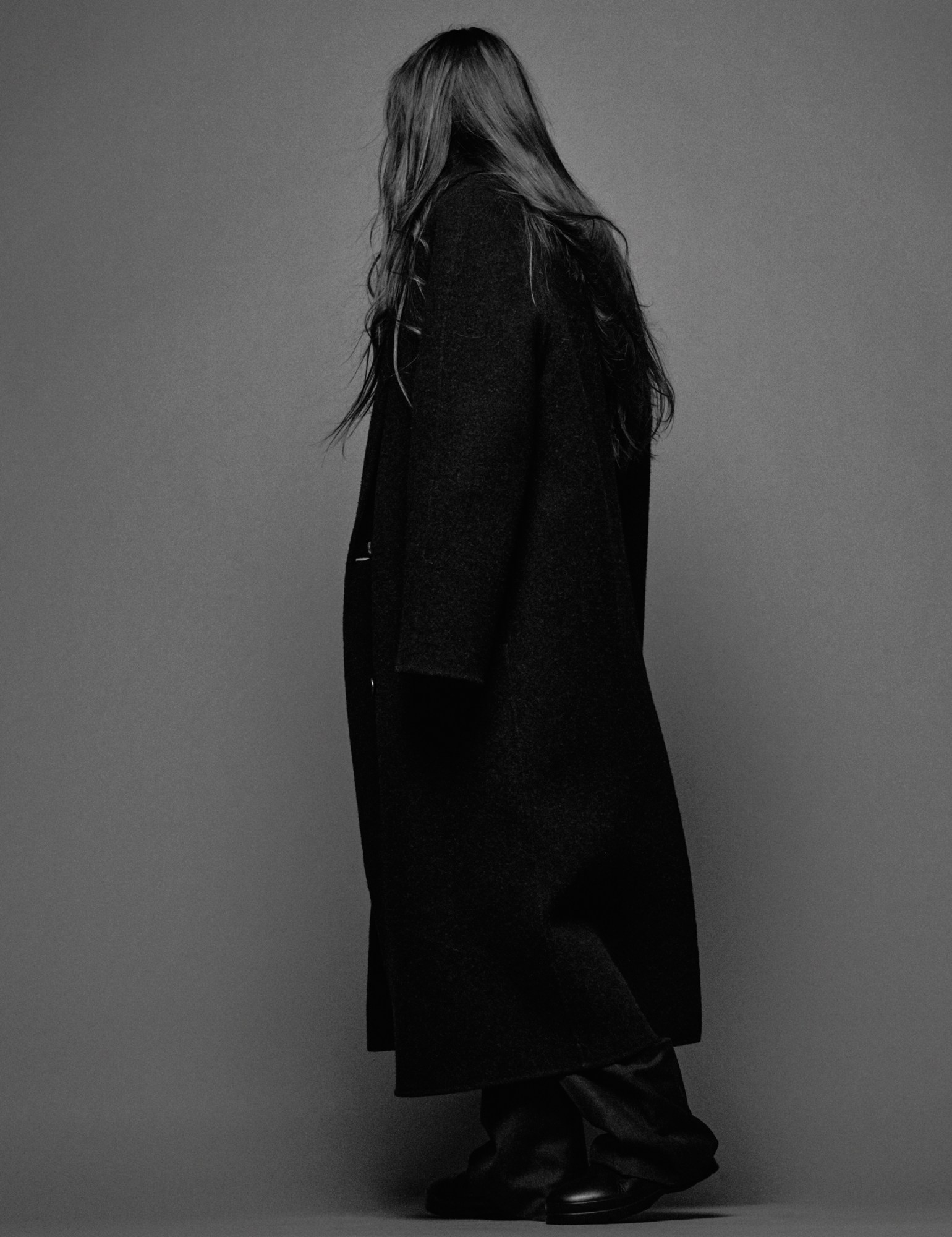
In 2014, The Row opened its first store, in Los Angeles. Centred on a swimming pool, it was just as noticeable for the objects as its clothes: Poul Kjaerholm coffee tables, Jean Prouvé furniture, a Fortuny floor lamp, Picasso ceramics. New York followed in 2017, with a Jacques Grange-designed sculpted staircase, and artworks by Jean-Michel Basquiat and Man Ray. The London store opened its doors in 2019 with James Turrell welcoming guests at the entrance. Each store is different, and full of curated 20th-century design objects, as well as The Row’s clothes and accessories.
Mary-Kate Olsen: Because we love architecture and design, we start there. You fall in love with the space because it already feels like home when you walk in, but that’s going to feel different in every city and we never wanted a cookie-cutter type of experience for our customers.
Patrick Seguin: My gallery specialises in 20th-century French furniture and architecture – Prouvé, Le Corbusier, Perriand, Jeanneret, Royère – and I think that the asceticism of that architectural furniture matches with their aesthetic.
Ashley Olsen: I mean I would say art is important, but not because it’s important. It’s just that we love it and we want to share that. And we want to share things that we discover with our customers. We love to tell stories. We love to give context to what we’re presenting.
Mary-Kate Olsen: Well, before art people were doing these luxury collaborations with fashion, we had done a collaboration with Damien Hirst and our backpacks, but that was, what, seven years ago? But I think if something feels unique and authentic and right, it doesn’t necessarily have to be art, it could be anything, like starting with music playing or doing a show with the Noguchi Foundation or with Beverly Pepper. We’ve been able to be surrounded by so many beautiful things. And we have really strong relationships that we have been growing over the years. And it’s nice when you can feel like you’re curating new friendships with like-minded people around the world.
Ai Tominaga: The Row is not just an easy fashion brand that follows trends, but a brand that gives you a glimpse of the designer’s own way of thinking, lifestyle, and even sense of life.
Pamela Golbin: The stores are quite sparse, but they’re not cold; they’re warm and generous. It feels quite soothing, not uncomfortable. It sets the context for the clothes. It’s as if you feel it’s the perfect space to wear their clothes.
‘Perfect’ is the word that is most frequently used to describe The Row. But, there’s more to perfection than priceless fabrics and exquisitely cut silhouettes. Pragmatism, and pace. The Row is centred on elegant daywear – it’s easy to wear – but it fashion at its most testudinal slowness. Its timelessness is what makes it priceless.
Mary-Kate Olsen: I think we’re very much perfectionists. We’re hard workers and we’ve always been hard workers. I’m happy that people look at it as a perfect product or products that feel complete, or whole. I think the reason we do fashion is to constantly try to fix our imperfections. And you have next season to do that. But it’s also our job to find every imperfection in there to make sure that we’re constantly pushing ourselves and training our eyes and making sure everyone is served. Just evolving and learning.
Pamela Golbin: I’m trying to think of another word that can qualify them better than just the search for perfection. Perhaps it’s discipline.
Ashley Olsen: I think it’s been really important for us to stay in control and to do things at a time that feels right. That has been the driving force of the brand and there are certain things probably that are accelerated, but there are other things that have slowed down. So, I think it’s about always finding that balance of making sure you’re obviously not behind or slow, but that you’re keeping up with the pace of the business in the right way. Not getting ahead of yourself, but not staying too far behind. And I think that’s an interest-ing balance.
James Gilchrist: I think it’s very subtle how they move forward and keep it fresh, without it being radically different. It’s more of an evolution.
Yasmin Warsame: That’s why you don’t feel bad about spending the money on it, because it’s a thing that you can keep for a long time. This is the real deal. I mean, I love all of the clothes, but I definitely can’t afford them! [Laughs]
Pamela Golbin: It’s costly, but not expensive.
James Gilchrist: I mean at the end of the day, to the eye, it doesn’t look cheap. It flies under the radar to an extent, but then when I see people wearing it, I think it looks super expensive.
Sarah Andelman: More than ever, we just want authenticity and I feel this is very intimate with The Row’s world. This is the true and pure luxury, and it’s also like being part of a club. Only people from the same club will recognise it.
Alastair McKimm: Every time I see a piece of clothing by The Row, I know what it is. The garments don’t even need a label. The cut, the drape, the tones, the proportions, the touch of fabrics… That is The Row. It’s timeless luxury.
Whereas Europe has its storied luxury houses, rooted in fine leather goods and haute couture, America has always been known for its trickled-down fashion businesses. 15 years in, The Row has cemented its status as America’s premier luxury house, following in the footsteps of Charles James, Calvin Klein and Helmut Lang, all the while remaining entirely its own. It is still privately owned.
Alastair McKimm: There’s always been a side to New York fashion design that’s understated and impeccable. Today, they are the custodians of American Chic.
Carolyn Murphy: The designs feel very American to me. There is something very American about a white T-shirt and nobody does that better than The Row, but to tailor a white T-shirt – now that is the European element.
Sarah Andelman: I’m not sure about this American touch, I feel it’s more global. It could be Italian, or Japanese, no?
Ai Tominaga: The lofty belief and the depth of careful craftsmanship are characteristics of traditional Japanese crafts and we feel empathy for them.
Yasmin Warsame: Nothing about it feels American. It’s very chic, and ‘America’ and ‘Chic’ usually don’t come in the same sentence. I think there’s a lot of European feel to the collections I think and I think that comes from their sense of travel and their sense of style.
James Gilchrist: I think it’s very American. And I do think it’s so New York to have these very simple, super-expensive clothes. You know, I also think it’s really brave to do those kinds of things. There’s not much to hide behind, right? I grew up with Calvin Klein, and also movies like American Psycho, so to me it’s there.
Zoë Ghertner: A woman wants to feel like themselves, wherever they’re from. There’s a touch of an ‘American Frontier’ woman who has to be strong and make it through the cold winter. That clean slate of moving out West, and the simplicity of design as function. In an American sense, it’s about boiling it down to what it needs to be to survive.
Contributors
Ai Tominaga is a Japanese model and actress.
Alastair McKimm is editor-in-chief of i-D.
Carolyn Murphy is an American model.
Gigi Hadid is an American model.
James Gilchrist is vice president of Comme des Garçons and
Dover Street Market.
Jonah Hill is an American actor.
Pamela Golbin is chief fashion curator at Musée des Art Décoratifs in Paris.
Patrick Seguin is a French antiques dealer, specialising in 20th century design.
Ruth Rogers is a chef and owner of River Café in London.
Sarah Andelman is a retailer and founder of Colette.
Wladimir Shall is a musician and sound designer for The Row.
Yasmin Warsame is a Canadian model.
Zoë Kravitz is an American actress.
Zoë Ghertner is a photographer based in Los Angeles.
Credits
Photography Daniel Jackson
Styling Alastair McKimm
Hair Bob Recine.
Make-up Diane Kendal at Julian Watson Agency for Zara Beauty.
Nail technician Honey at Exposure NY using Londontown Lakur in “Crowning Crumpet”.
Photography assistance Jeffrey Pearson.
Digital technician Karen Goss.
Styling assistance Madison Matusich and Milton Dixon III.
Hair assistance Kabuto at The Wall Group.
Make-up assistance Jamal Scott.
Producer Rebekah Mikale.
Casting director Samuel Ellis Scheinman for DMCASTING.
Model Gigi Hadid at IMG.
